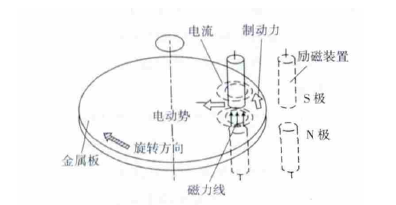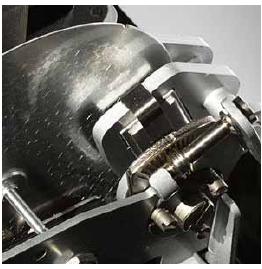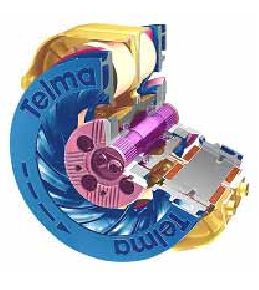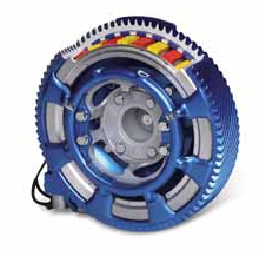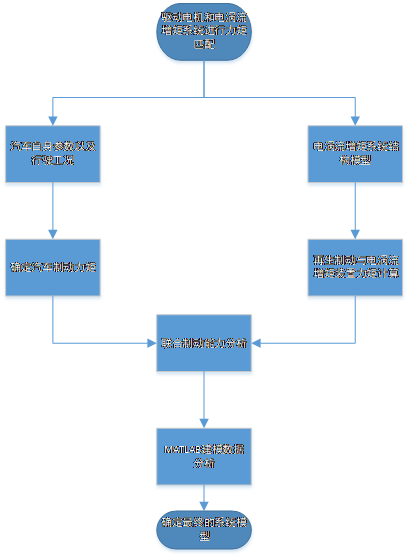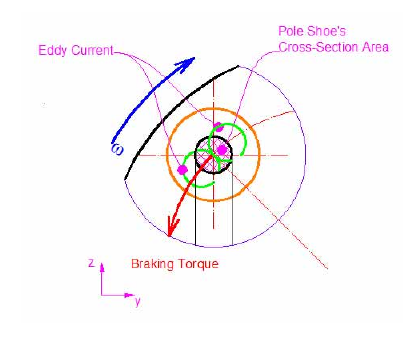汽车再生制动装置电涡流增矩系统研究毕业论文
2020-04-12 16:14:46
汽车再生制动装置电涡流增矩系统研究
学院(系): 国际教育学院
专业班级: 车辆专业 gj1403班
学生姓名: 胡阳阳
指导教师: 谭罡风
学位论文原创性声明
本人郑重声明:所呈交的论文是本人在导师的指导下独立进行研究所取得的研究成果。除了文中特别加以标注引用的内容外,本论文不包括任何其他个人或集体已经发表或撰写的成果作品。本人完全意识到本声明的法律后果由本人承担。
作者签名:
年 月 日
学位论文版权使用授权书
本学位论文作者完全了解学校有关保障、使用学位论文的规定,同意学校保留并向有关学位论文管理部门或机构送交论文的复印件和电子版,允许论文被查阅和借阅。本人授权省级优秀学士论文评选机构将本学位论文的全部或部分内容编入有关数据进行检索,可以采用影印、缩印或扫描等复制手段保存和汇编本学位论文。
本学位论文属于1、保密囗,在 年解密后适用本授权书
2、不保密囗 。
(请在以上相应方框内打“√”)
作者签名: 年 月 日
导师签名: 年 月 日
Research on Eddy Current Increase Torque System of Automobile Regenerative Braking Device
Abstract
The regenerative braking technology is a part of the kinetic energy of an electric vehicle when it is braked, which is converted into electrical energy by a motor and stored for recycling. However, the size of the regenerative braking force is limited by factors such as the speed of the vehicle, the battery capacity, and the motor. For this purpose, an auxiliary braking device is required to supplement the braking force. The eddy current retarder is a popular auxiliary brake device at present, but its energy consumption and braking force decay problem cannot be solved. In this regard, this paper proposes a basic idea of an eddy-current increase torque system to realize the braking force in the running of a car through a combination of eddy current braking and regenerative braking. This paper firstly studies the eddy current braking mechanism theoretically, deduces the mathematical model of the eddy current braking unit, and analyzes the factors affecting the stability of its torque output. The Dongfeng Tianlong commercial vehicle was modeled and its torque distribution was carried out under a braking condition of 30 km/h and a gradient of 6%. The basic parameters of the eddy current brake unit were designed.
Key Words: Regenerative braking;Auxiliary brake;Eddy Current breaking;Combined braking
Contents
Chapter One introduction 5
1.1 Research Background 5
1.2 Overview of Vehicle-Assisted Braking Devices 6
1.3 Current status of regenerative braking 8
Regenerative braking energy flow 9
1.4 Research Status of Eddy Current Brake 10
(a) single disc 11
(b) Double Disc 12
(c) Rotary drum structure 12
1.5 The content and significance of this study 14
Chapter Two Principles of Eddy Current Increase Torque System 16
2.1 Introduction 16
2.2 Working Principle of Eddy Current Braking 16
2.3 Derivation of Eddy Current Braking Mathematical Model 18
2.3.1 Equivalent magnetic circuit establishment 18
2.3.2 Derivation of Eddy Current Braking Mathematical Model 19
One set of coil-core system magnetic flux is 19
d The thickness of the rotor disc, in mm. 20
2.3.3 Calculation of eddy current torque increase device parameters 22
2.3 Simulation Analysis of Eddy Current Braking System 25
2.5 Summary of this chapter 34
Chapter 3 Introduction to Regenerative Braking Module 35
3.1 Introduction 35
3.2 Regenerative braking mechanism and model selection 36
3.2.1 Basic Principles of Regenerative Braking 36
3.2.2 Selection of Regenerative Braking Motor 38
3.2.3 Factors Affecting Regenerative Braking Energy Distribution 40
3.2.4 Model of Regenerative Braking Unit 40
3.3 Summary of this chapter 41
Chapter 4 Summary and Outlook 42
4.1 Summary of the Full-Text Work 42
4.2 Outlook for Follow-Up Research 44
References 45
Acknowledgement 47
Chapter One introduction
Research Background
The function of the braking system is to enable the car to decelerate, park, or park in accordance with the driver's will during the driving process. It is an important system of the car. As the key part of the braking system, the brake is the main component to ensure the safety of the vehicle. The mechanical friction brake is the most widely used automobile brake at present, mainly including two types of disc brakes and drum brakes. Nowadays, with the maturing of automobile technology, the speed of automobiles has been greatly improved, and increasingly complex urban construction and transportation networks have increased the daily maintenance of the standard of living, which has led to an increase in the number of car ownership. These factors have made the driving conditions of automobiles more and more complicated. Heavy-duty braking is often used in cars that drive on complex roads in mountain areas and in urban traffic jams. Overload, high speed, overheating braking, frequent braking, and reduced braking performance will affect the stability and safety of friction brakes. Frequent use of the brakes will inevitably lead to accelerated wear of the friction plates. In the long run, brake performance of the brakes will be affected, causing safety hazards, affecting the driving safety of the car, and even causing traffic accidents, affecting passengers' lives and property. The thermal recession is an inherent defect of the friction brake, and it will also lead to a decline in the safety of the car brake. The phenol rubber sheet resin friction brake pad is currently the most widely used non-metallic friction plate, and the phenol resin is the core of the friction plate. When the temperature is about 220°C during braking, the phenol resin will decompose. In addition, with the continuous improvement of environmental awareness, people are paying more and more attention to the environmental pollution caused by the dust generated by brake friction, and the harsh metal noise that the vehicle will produce during the deceleration process. Such noise pollution accounts for urban noise. A large part of it.
At present, friction brakes widely used in the market have obvious thermal decay characteristics during operation, and may generate brake noise and brake dust. Not only affects its safety, but also causes environmental pollution. The electromagnetic brake belongs to the non-contact eddy current brake, which has the features of stable braking, fast response time, no brake dust, convenient control and no noise generation. The use of electromagnetic force to brake the vehicle can be well solved. Friction brakes have many problems, so the application of electromagnetic brakes in automobiles will become more and more extensive.The regenerative braking technology is a specific braking mode of the vehicle. During the braking or deceleration process, part of the car's kinetic energy is absorbed and stored by the energy recovery system, and the stored energy is released when the car starts accelerating. Form the driving force driving the car. This way, on the one hand, the kinetic energy of the vehicle is converted into other forms of energy recovery and reuse, which saves energy, rather than turning the energy of the vehicle into heat energy like a mechanical friction brake. Therefore, research on regenerative braking technology has great practical significance.
Overview of Vehicle-Assisted Braking Devices
The auxiliary brake is an auxiliary brake device that is used to ensure stable speed or continuous deceleration when the vehicle is going downhill for a long time. By using such a device, the load of the service brake device can be reduced or completely reduced, thereby effectively reducing the risk of brake failure caused by the service brake device during long-term heavy-duty friction braking. The auxiliary braking system shows great potential for development in terms of economy, environmental protection and safety.
以上是毕业论文大纲或资料介绍,该课题完整毕业论文、开题报告、任务书、程序设计、图纸设计等资料请添加微信获取,微信号:bysjorg。
相关图片展示:
